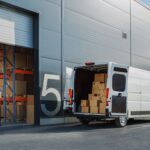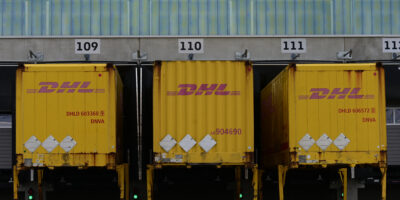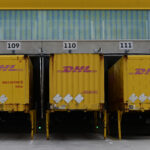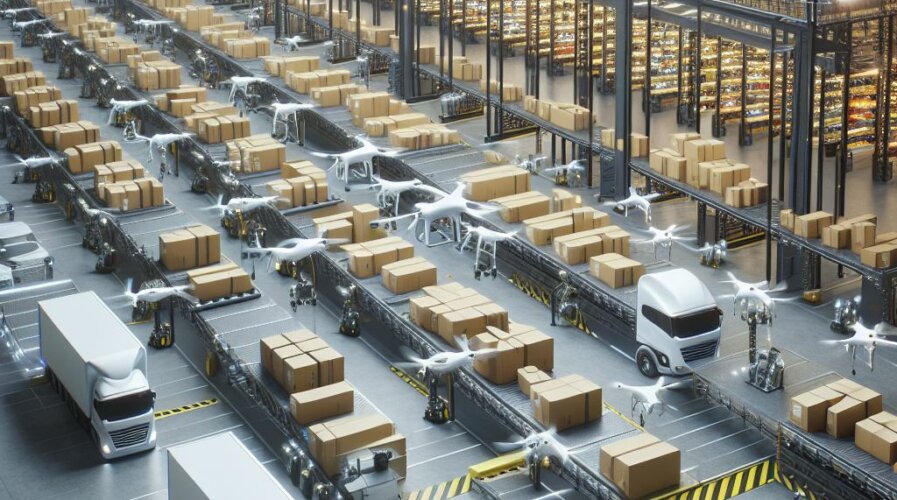
Will we see more automation in the transport and logistics industry in 2024? (Image generated by AI).
On the horizon: transport and logistics in 2024
- In 2024, software will be a core business model for automotive manufacturers.
- 45% of logistics companies in the APAC are motivated to buy logistics assets tracking solutions.
- Driver shortage is still a global problem disrupting the transport and logistics industry.
The transport and logistics industry is the fundamental cog that holds society together. From the food on your plate to the impulse-buy online purchase, without the transport and logistics industry, nothing works.
The industry was heavily disrupted during the pandemic, but investments in technology, perhaps perversely, did not slow down. In fact, most transport and logistic companies started looking to automate their operations.
In fact, according to a report by Gartner, with an estimated revenue of US$20.24 billion in 2022, supply chain management (SCM) is the fastest-growing market sector. Over half of businesses have adopted logistics and SCM software in the past two years to remain competitive in the rapidly changing market.
Without transport and logistics, the supply chain would cease to function and businesses would end up facing huge losses. Given the need to meet customer demand and improve efficiency in the industry, AI and automation, in particular, are becoming essential.
For Sockalingam Muthiah, head of professional services, Asia Pacific at HERE Technologies, 2024 promises to be a pivotal chapter in the evolving landscape of the automotive and transport & logistics industries. The speed at which technological advancements are transforming the way people and goods move is, he believes, nothing short of astonishing.

Sockalingam Muthiah, head of professional services, Asia Pacific at HERE Technologies.
Muthiah holds that the Asia Pacific region boasts remarkable diversity and each of its sub-regions is grappling with its own distinctive challenges. Speaking to Tech Wire Asia, Muthiah dispelled the notion of generalized trends and explored the nuanced and distinct dynamics shaping the automotive and logistics industries of this multifaceted region.
“Yet, amidst this diversity, one thing remains certain: these trends collectively hold the power to redefine our relationship with mobility, transportation and logistics in the year to come,” he said.
Making or breaking the vehicle with software
Autonomous and electric vehicles are now considered “software-defined entities,” where innovation is driven not by raw engine power, but by lines of code and advanced algorithms. A recent report has projected the global software-defined vehicle (SDV) market to grow by a CAGR of 9.1% between 2023 and 2028, to about US$419.7 billion in five years.
“Technologies such as Advanced Driver Assistance Systems (ADAS) and highly automated driving solutions have become intrinsic to the driving experience. ADAS enhances safety, providing drivers with features like lane-keeping assistance and adaptive cruise control. It also powers automated driving. Beyond safety, automated driving requires a high-precision map that offers connectivity, which will open doors to a host of services, apps, and updates that can be delivered over the air.
“Major automotive original equipment manufacturers (OEMs) have taken steps to accelerate the move to SDVs. For instance, Hyundai Motor Company and Kia Corporation are set to form the Hyundai Motor Group Model-Based Development (MBD) Consortium to accelerate the SDV transition through standardization and an open development ecosystem,” explained Muthiah.
He believes that in the pursuit of a better connected driving experience, the allure of these software advancements entices consumers with more than raw horsepower. By 2024, he predicts, software will make or break a vehicle’s success and will be a core business model for automotive manufacturers.
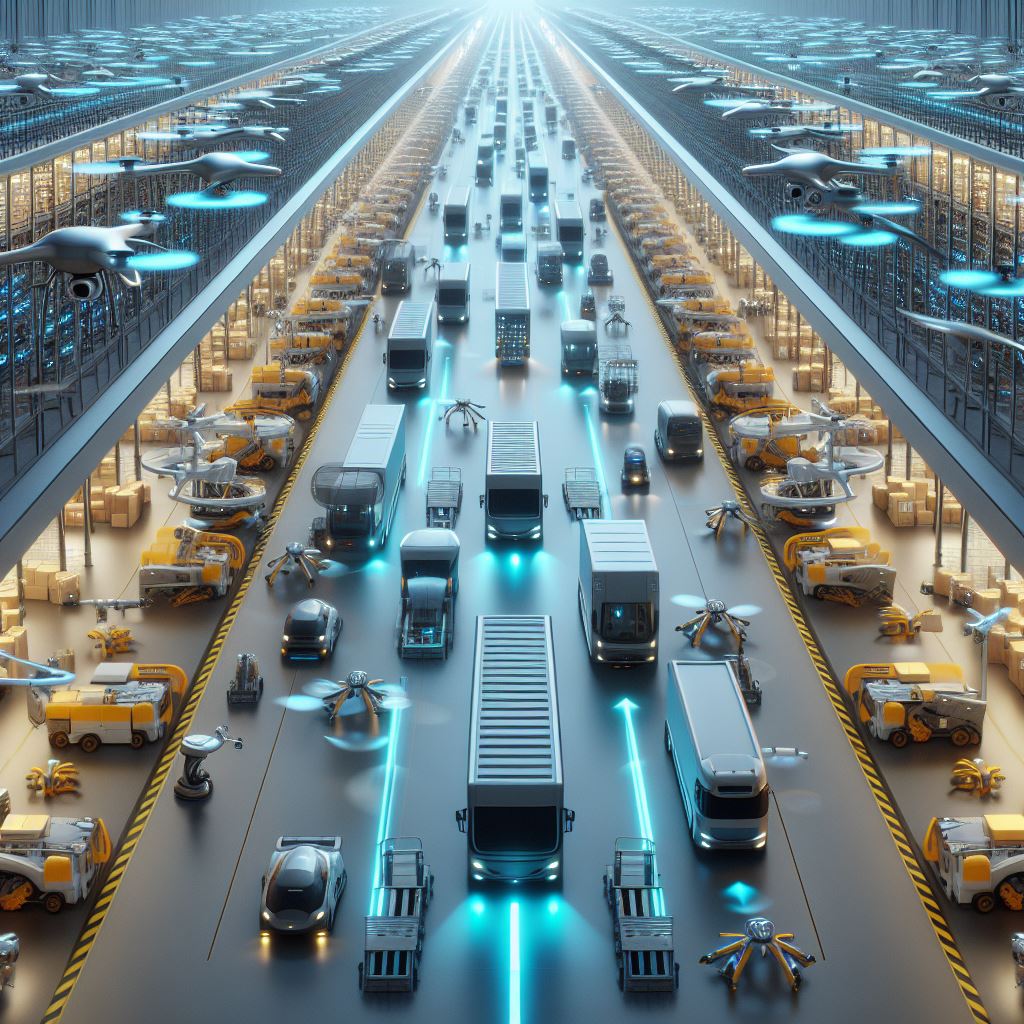
AI in transportation and logistics to make a difference in 2024. (Image generated by AI)
Reshaping the relationship with personal vehicle ownership
Mobility-as-a-Service (MaaS) is set to gain more ground in 2024. MaaS is about recognizing transportation is not confined to a single mode or a solitary means of getting from A to B. For Muthiah, it’s an acknowledgment that the modern commuter values flexibility and variety, seeking the most efficient, cost-effective, and sustainable means of travel for each journey.
“From car-sharing and carpooling to rental cars and shared bicycles, the scope of MaaS is expanding, offering commuters greater flexibility and efficiency without the burdens of ownership. Not only are there more shared mobility options, but we can also expect new hybrid mobility services to blend traditional transportation options with new technologies like electric vehicles (EVs) and autonomous cars,” he explained.
For instance, in India, Muthiah said Tata Power EV Charging Solutions is collaborating with car-sharing platform Zoomcar to promote EV adoption and to drive sustainable mobility growth. Mobility operators with electric fleets may find themselves an attractive alternative in cities that are pursuing emissions-cutting goals to address the climate crisis.
“MaaS reflects the evolving needs and priorities of consumers in an urbanized, tech-savvy world. It compels automakers to redefine their role within the mobility ecosystem as they need to adapt to offer more than just cars; they now need to offer mobility solutions,” he added.
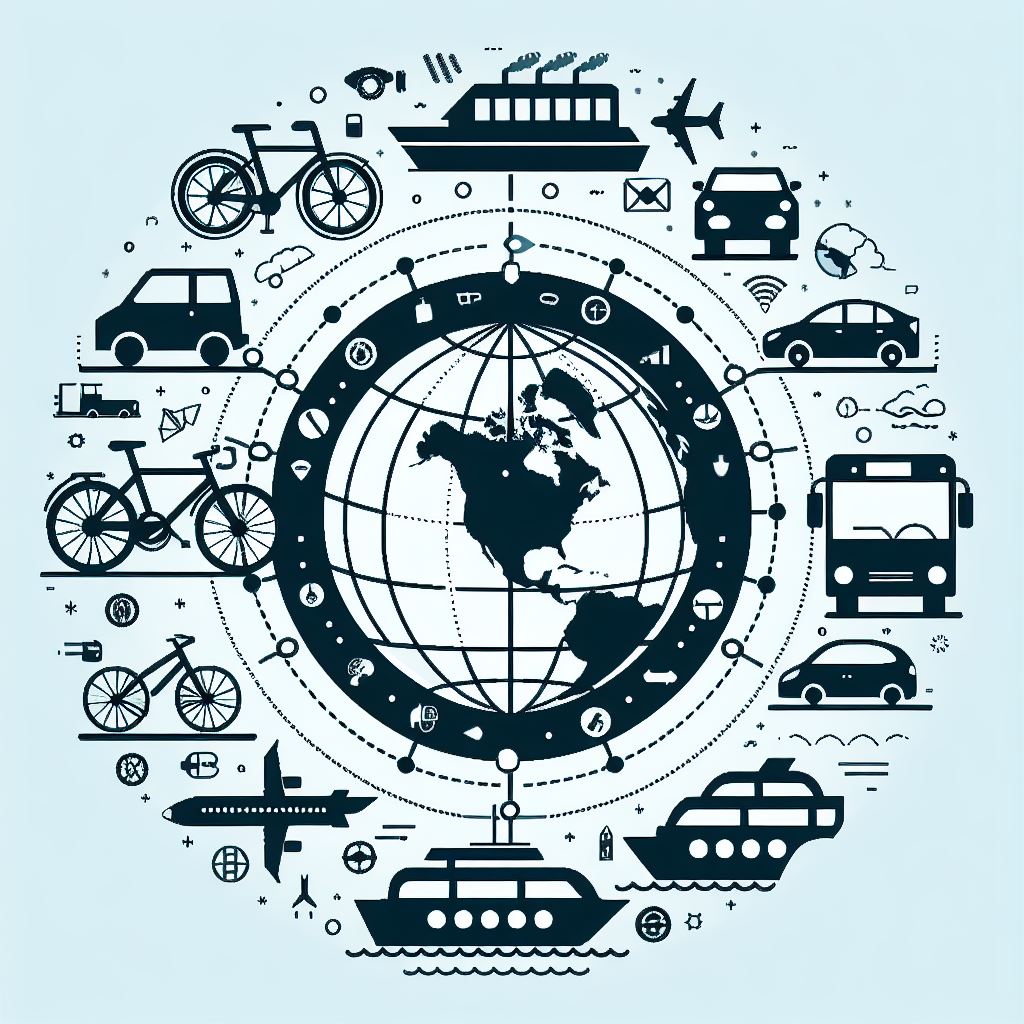
Mobility-as-a-Service (MaaS) is set to gain even more ground in 2024. (Image generated by AI)
Transport and logistics: A revolution powered by e-commerce
As the logistics revolution continues in Asia Pacific, more consumers have a keen appetite for flexible delivery options, with 82% of e-commerce shoppers in the region expressing their desire to have end-to-end tracking of all their shipments, regardless of value or origin. Many also expect free returns when they shop online.
According to HERE Technologies’ inaugural APAC on the Move report, 45% of logistics companies in the region are motivated to invest in logistics assets tracking solutions, with the main goal to improve customer satisfaction. 33% of logistics companies are planning to buy drones to improve their services – a promised solution that navigates heavy traffic congestion and narrow streets with a minimal carbon footprint. Since launching in 2022, China’s e-commerce food delivery platform Meituan has completed more than 184,000 orders via drones and has established 17 delivery drone routes across the country.
Greater China presents a unique logistics landscape. Muthiah said that the countrys logistics industry has experienced such a remarkable boom since the pandemic, thanks to the country’s extensive logistics infrastructure, including a vast network of warehouses and advanced IT services. That has made it increasingly challenging for foreign operators to compete effectively in the region.
Muthiah believes that China’s logistics success accentuates the need for adaptability and knowledge of local dynamics when designing strategies to meet localized needs.
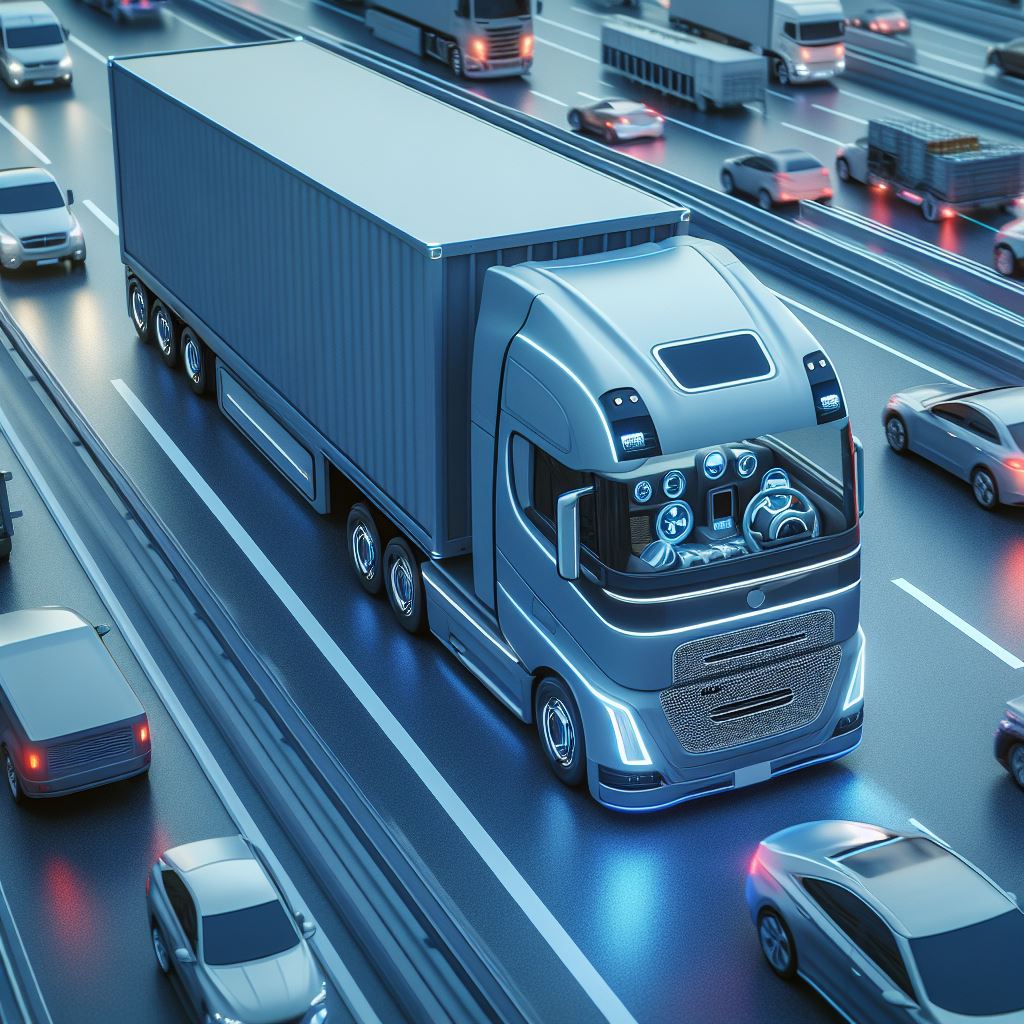
Can self-driving trucks solve driver shortage problems? (Image generated by AI).
Transport and logistics: tackling truck driver shortage
Driver shortage was a big problem during the pandemic, not just in APAC but globally. Many might think the problem solved post-pandemic. However, driver shortage is still a global problem disrupting the industry.
In Japan, a shortage of truck drivers exists despite the growing popularity of e-commerce. Starting April 2024, truck drivers across Japan will have an annual limit of 960 working hours as part of the government’s work-style reforms. The impact this rule has on the logistics sector has been dubbed the “2024 Problem,” as this is expected to disrupt delivery services amid an inability to attract younger workers into the industry.
Muthiah said that Japan has begun to adopt countermeasures that involve automation and technologies to address the shortage of truck drivers. Amazon has introduced around 2,600 self-propelled robots at its logistics base in China, where each will fetch parcels from shelves and deliver them automatically to employees to process. It is also reported that Japan has the highest number of logistics firms compared to the rest of Asia Pacific using technology to track assets in real time without manual input.
The same issue of driver shortages can be seen in Australia. There the average age of a truck driver is 47 and there are over 21,000 advertised vacancies. The Australian logistics industry is turning to robotics and drones to help alleviate the pressure from the shortfall between demand and driver supply.
“These trends represent just a fraction of the multifaceted shifts currently unfolding in the automotive and transport and logistics sectors in the Asia Pacific region. The year ahead promises continuous transformation, which will bring about challenges and opportunities that are nothing short of exhilarating. The dynamic interplay of these trends serves as a catalyst for innovation and transformation, and it is in this environment that we have the opportunity to redefine the very nature of mobility with technology,” Muthiah concluded.
READ MORE
- 3 Steps to Successfully Automate Copilot for Microsoft 365 Implementation
- Trustworthy AI – the Promise of Enterprise-Friendly Generative Machine Learning with Dell and NVIDIA
- Strategies for Democratizing GenAI
- The criticality of endpoint management in cybersecurity and operations
- Ethical AI: The renewed importance of safeguarding data and customer privacy in Generative AI applications


